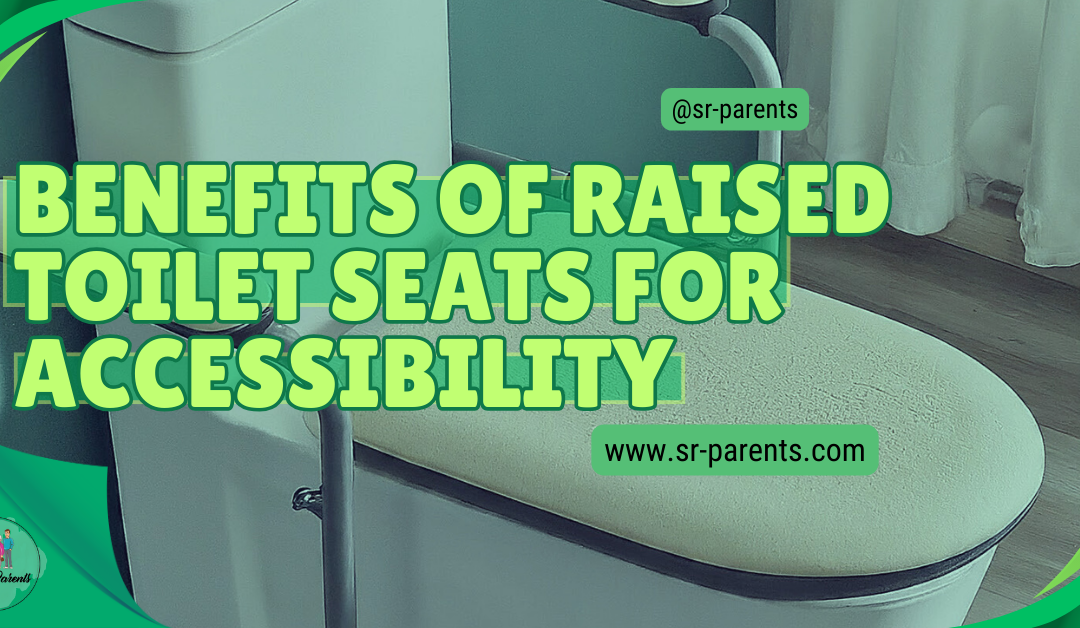Struggling with mobility challenges can turn simple daily tasks into significant hurdles, but one solution often needs to be noticed: raised toilet seats. Have you ever wondered about the benefits of raised toilet seats for accessibility and how a seemingly minor adjustment in your bathroom could drastically improve comfort and accessibility? Raised toilet seats are more than just an aid—they’re a game-changer for enhancing independence and safety. In this article, we’ll explore the remarkable benefits of raised toilet seats for accessibility, shedding light on how they can make a profound difference in daily life.
Contents
Addressing Mobility Issues: The Benefits of Raised Toilet Seats for Accessibility
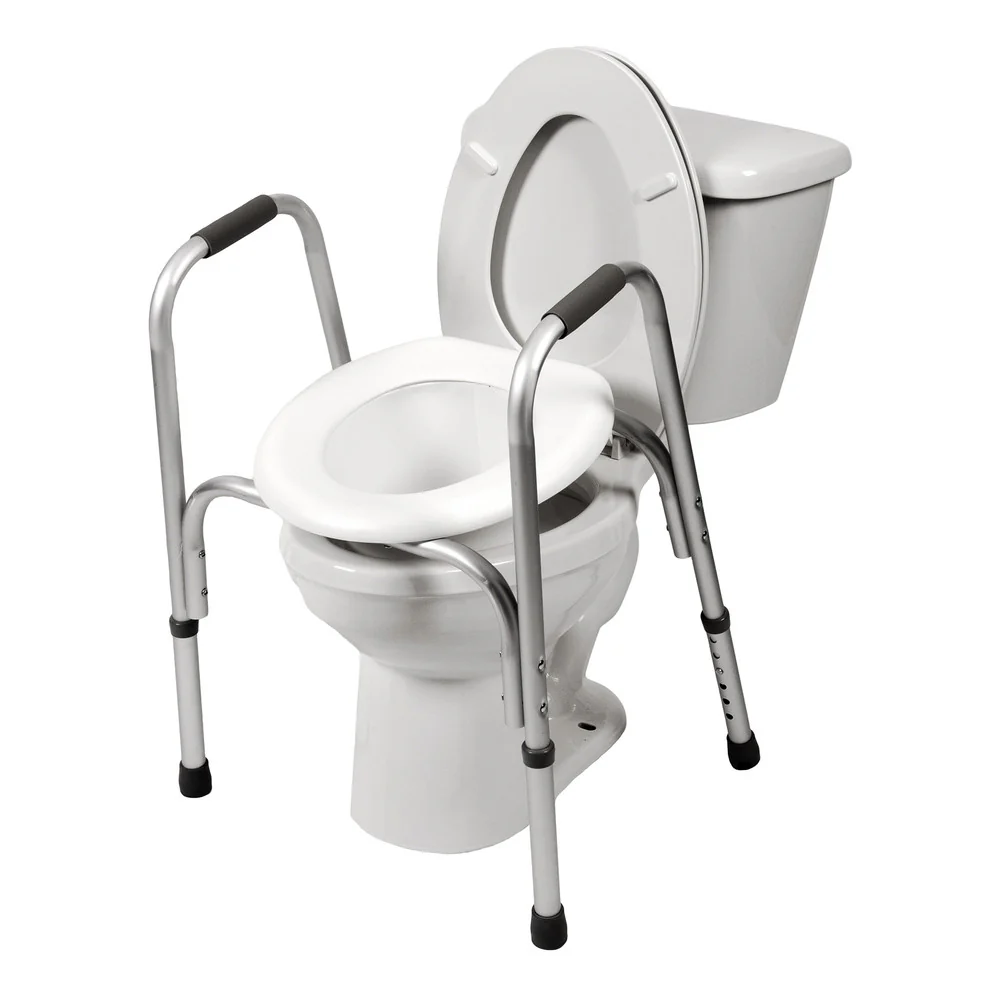
Mobility issues can significantly impact an individual’s ability to perform daily tasks independently, especially in the privacy of their bathroom. Conditions such as arthritis, surgeries, or general aging can make it challenging to safely and comfortably use a standard toilet. This is where the benefits of raised toilet seats for accessibility come into play. These adaptive devices are designed to assist those with limited mobility by raising the height of the toilet, making it easier to sit down and stand up without the need for excessive bending of the knees and hips.
Raised toilet seats are a cost-effective and simple solution that can improve accessibility and enhance safety in the bathroom. They are easy to install and come in various styles to meet individual needs and preferences, including models with or without handles and those that fit different toilet shapes. Their benefits extend beyond just ease of use; they foster independence and maintain dignity for individuals facing mobility challenges. Furthermore, proper selection, installation, and maintenance of raised toilet seats help prevent accidents and falls, common concerns in bathroom environments.
Key Takeaways
- Raised toilet seats assist individuals with mobility challenges in using the bathroom independently.
- These adaptive devices come in various styles and designs to cater to specific needs.
- They help prevent falls by improving the safety and accessibility of toilets.
Understanding Mobility Issues and Their Impact on Daily Life
Mobility issues are a significant concern for many individuals, particularly as they age. They experience difficulties in movement, which can stem from various underlying health conditions or physical limitations. As reported in a narrative review, approximately 35% of people aged 70 and over suffer from mobility limitations. This can escalate to affect most individuals over the age of 85.
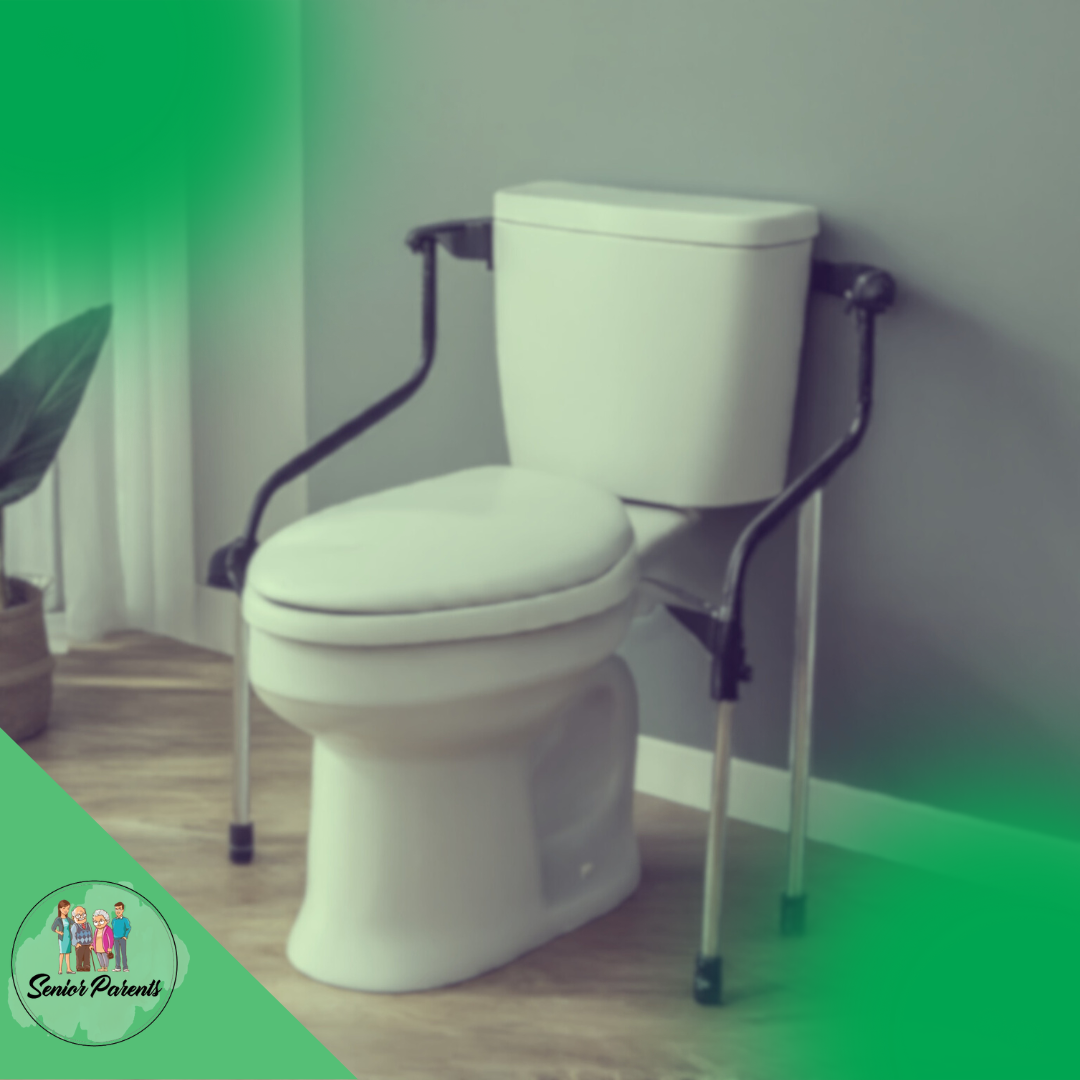
Impact on Daily Life
These challenges may lead to reduced ability to perform activities of daily living (ADLs), including basic tasks such as bathing, dressing, and toileting. The impact on daily life is considerable, with increased risks of falls, hospitalizations, and decreased quality of life. Moreover, such limitations can lead to a rise in dependency on others for basic needs.
Effects on Social Engagement
Changes in mobility also influence social engagement. Individuals with reduced physical capacity may find it challenging to participate in social activities or feel isolated due to their inability to navigate outdoor environments effectively. Mobility constraints thus affect physical well-being and emotional health through reduced social interaction.
Raised toilet seats have been employed as an effective assistive device to address specific mobility issues related to toileting. These toilet add-ons minimize the strain on joints when sitting down or standing up, providing a safer and more comfortable experience. This adaptation in the household infrastructure can play a critical role in fostering independence for those with mobility issues.
The Importance of Proper Bathroom Safety for Mobility-Challenged Individuals
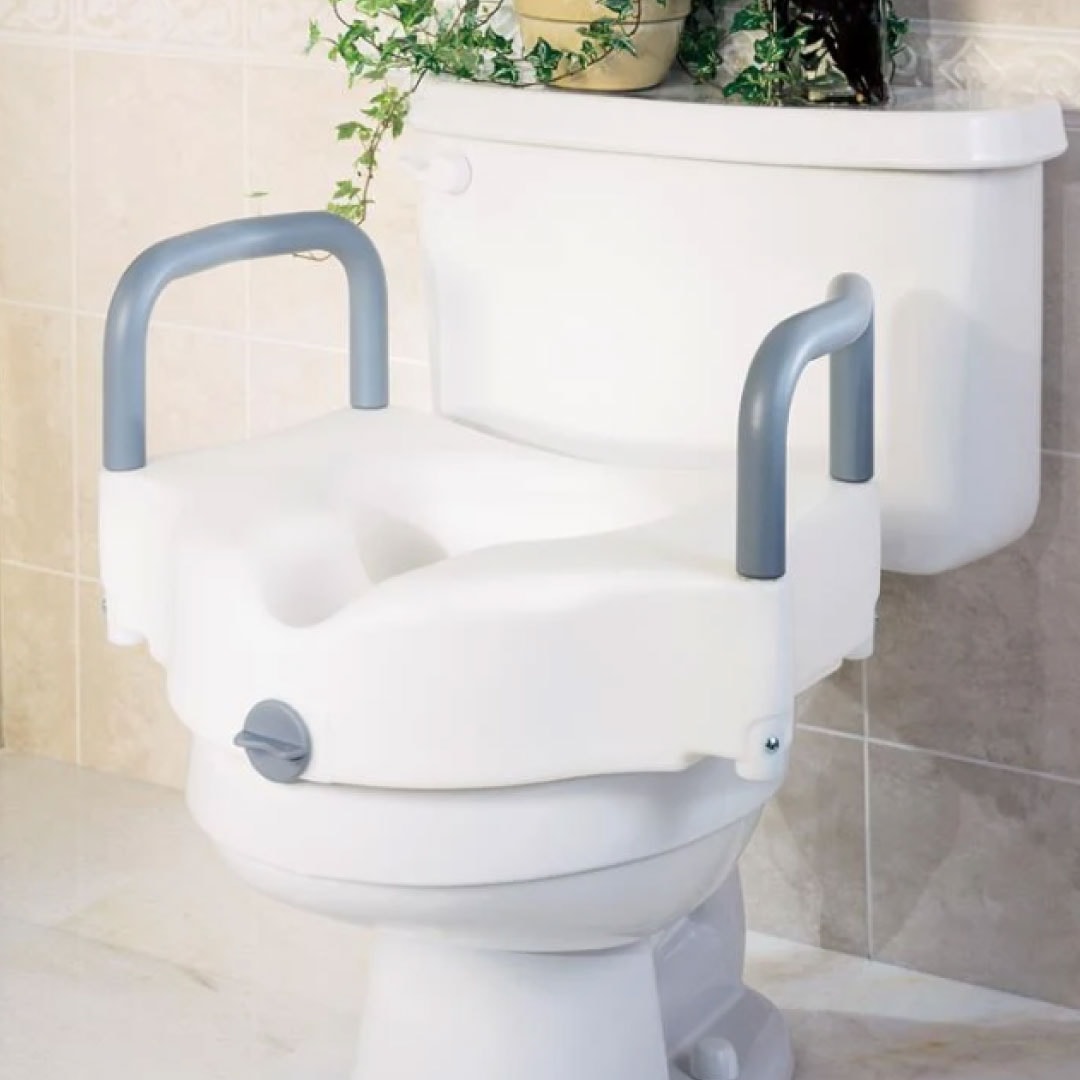
The bathroom can present significant risks for individuals facing mobility challenges due to its typically small size and hard, slippery surfaces. Understanding the benefits of raised toilet seats for accessibility is crucial for ensuring proper bathroom safety. By incorporating these aids; you can prevent accidents and maintain independence more effectively.
Raised Toilet Seats
These are particularly beneficial as they increase the height of the toilet, making it easier for people to sit down and stand up without assistance. The reduced strain can decrease the risk of falls.
Grab Bars
Additionally, installing grab bars around the toilet and shower area can provide the necessary support, enhancing stability for those with limited mobility.
- Lighting: Adequate lighting is essential to help individuals navigate safely.
- Non-Slip Mats: Placing non-slip mats in and around the shower or tub can greatly reduce the risk of falls on wet surfaces.
Designing a bathroom that prioritizes safety is not only about installing equipment but also involves considering the layout. There should be ample clear floor space to allow comfortable and safe movement, particularly for those using mobility aids such as walkers or wheelchairs.
What Are Raised Toilet Seats?
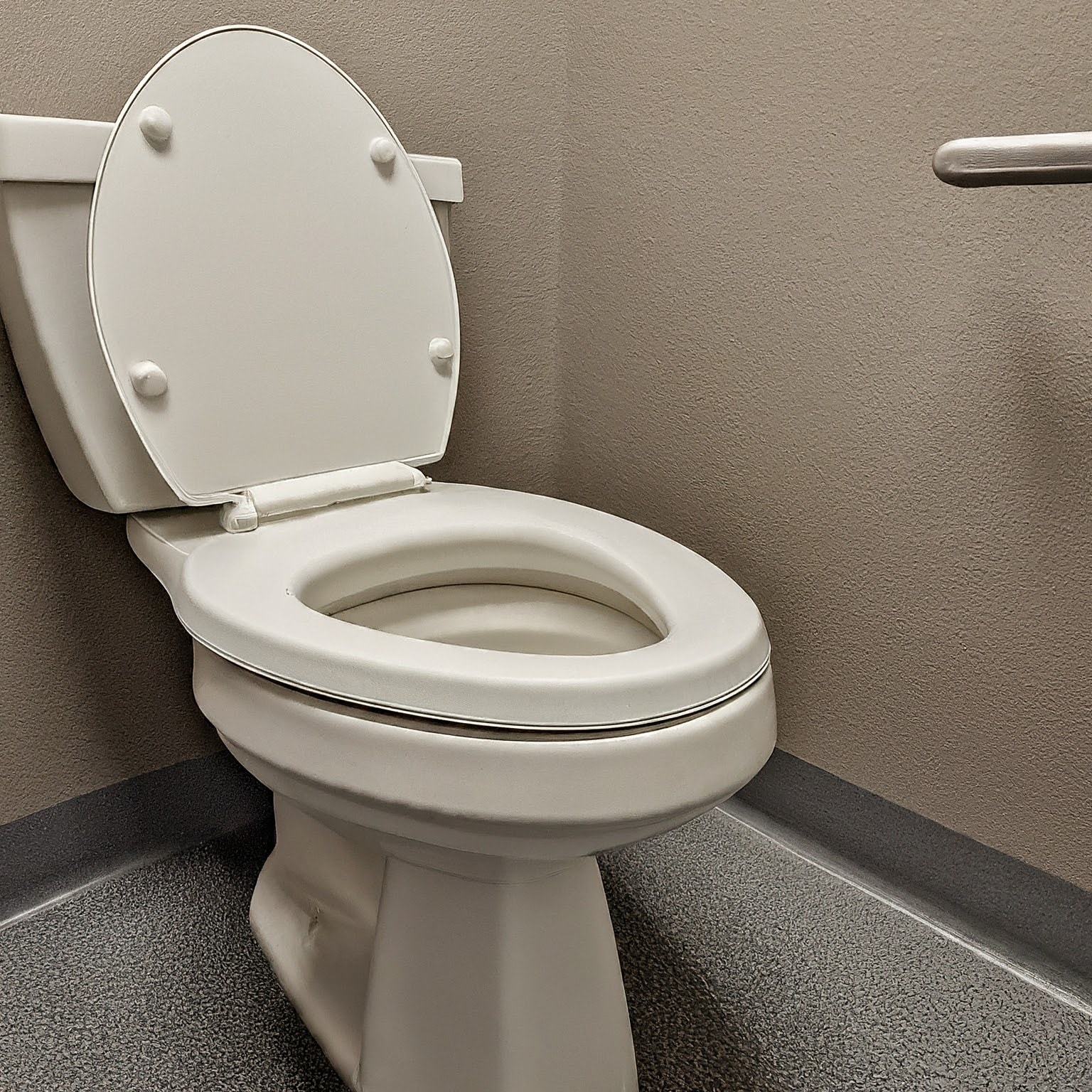
Raised toilet seats are important assistive devices tailored to aid individuals with mobility issues. The benefits of raised toilet seats for accessibility are substantial, as they provide a significant advantage by increasing the height of standard toilets, making accessibility easier.
Design and Features
Raised toilet seats come in various designs, including those that fit over the existing toilet seat and replace it entirely. Some models offer padded seats for extra comfort, while others feature handles or arms to aid stability and balance. The attachment methods also vary, with options such as front clamping mechanisms, side grips, or non-slip pads ensuring the seat remains secure.
- Materials: Often made from durable plastics or composites.
- Height Adjustment: Typically ranging from 2 to 6 inches.
- Additional Features: This may include antimicrobial coatings or cutouts for personal hygiene.
Functionality and Comfort
These seats enhance safety and promote independence by enabling users to sit down and stand up with minimal strain. For those who may experience pain or have joint issues, the reduced need to bend the knees and hips can provide relief and improve the bathroom experience. Comfort is often a priority, with many seats tailored to individual user needs and preferences.
Benefits of Using Raised Toilet Seats
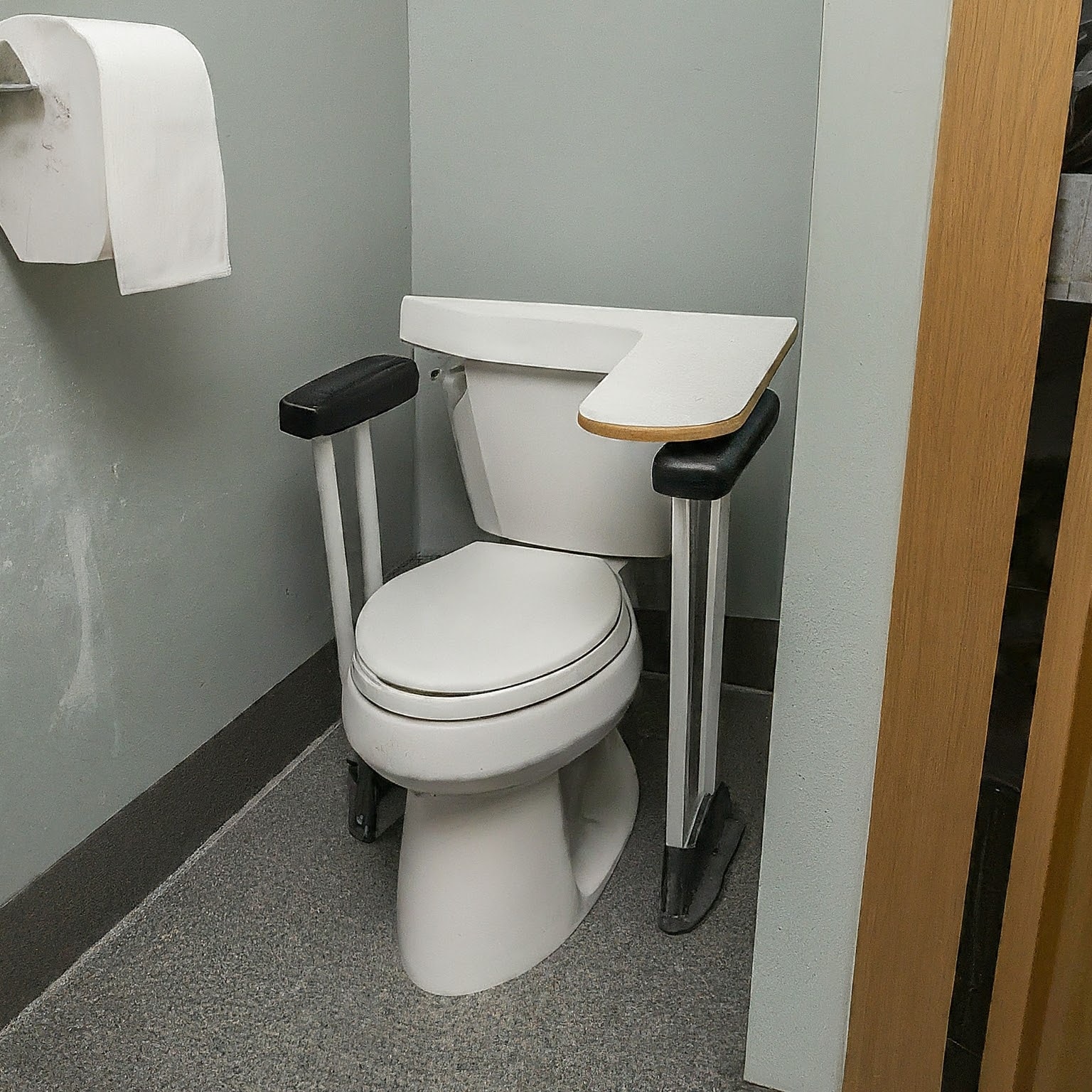
Raised toilet seats are essential tools designed to aid individuals with limited mobility. They allow for easier and safer access to toilet facilities by reducing the physical strain of sitting down and standing up.
Enhanced Accessibility
Raised toilet seats increase the height of a standard toilet, reducing the distance one must move to sit or stand. This is particularly beneficial for individuals with joint pain or limited strength, as it lessens the strain on knees and hips during usage.
Increased Independence
Installing a raised toilet seat can give users a greater sense of control over their bathroom visits. These adaptive devices foster a sense of independence and dignity by enabling users to use the toilet without assistance.
Improved Safety
With high-quality materials and sturdy designs, raised toilet seats offer a secure solution to bathroom safety concerns. They often come equipped with handles or are used alongside grab rails, significantly lowering the risk of slips and falls.
Selection Criteria for Raised Toilet Seats
When choosing a raised toilet seat, it’s important to focus on three main criteria to appreciate the benefits of raised toilet seats for accessibility fully: the appropriate height increase, support features for stability, and compatibility with your existing toilet.
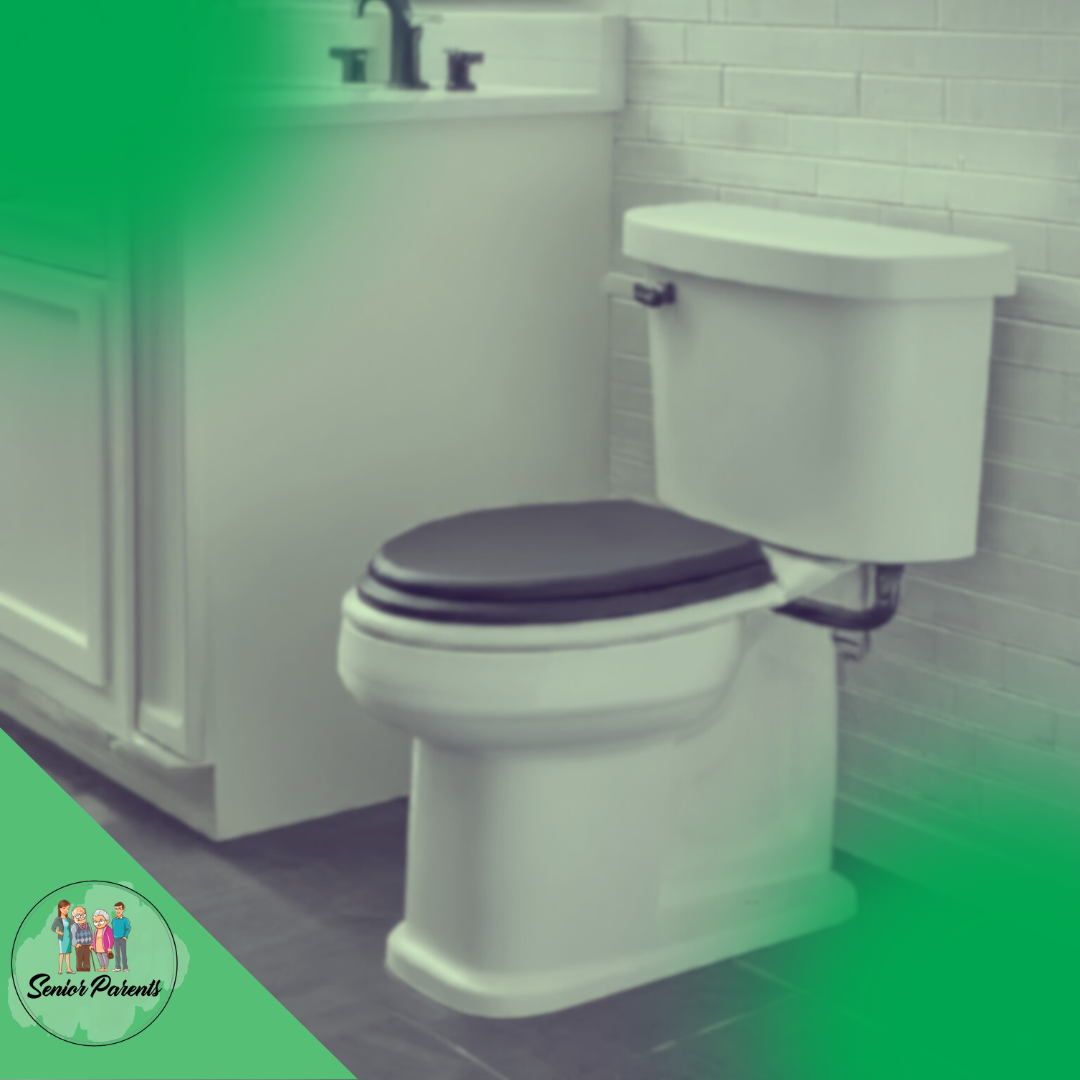
Height Considerations
The height of a raised toilet seat is crucial to aid individuals in sitting down and standing up with ease. A proper fit depends on the user’s leg length and their existing toilet bowl height. The seat should align with the knee level for maximum comfort. It’s recommended to measure the distance from the floor to the user’s knee and the height of the toilet bowl to determine the necessary elevation.
Support and Stability Features
For safety and confidence, support and stability are top priorities. Look for features like armrests or handles, which can significantly assist balance and leverage. Select a model with a sturdy attachment mechanism to ensure a secure fit to the toilet bowl, minimizing movement or shifting.
Compatibility with Existing Toilets
The variety in toilet bowl shapes means there’s no one-size-fits-all raised seat. The seat must be compatible with the specific shape and design of the existing fixture, be it round or oval. Check product descriptions carefully to confirm that the seat fits with standard, elongated, or specific toilet models, as this Guide from Carex advises.
Did You Know?
Before deciding on a raised toilet seat, individuals should assess their specific requirements or seek advice from a healthcare provider to ensure they choose a product that provides the support and comfort they need.
Benefits of Raised Toilet Seats for Accessibility: Installation of Raised Toilet Seats
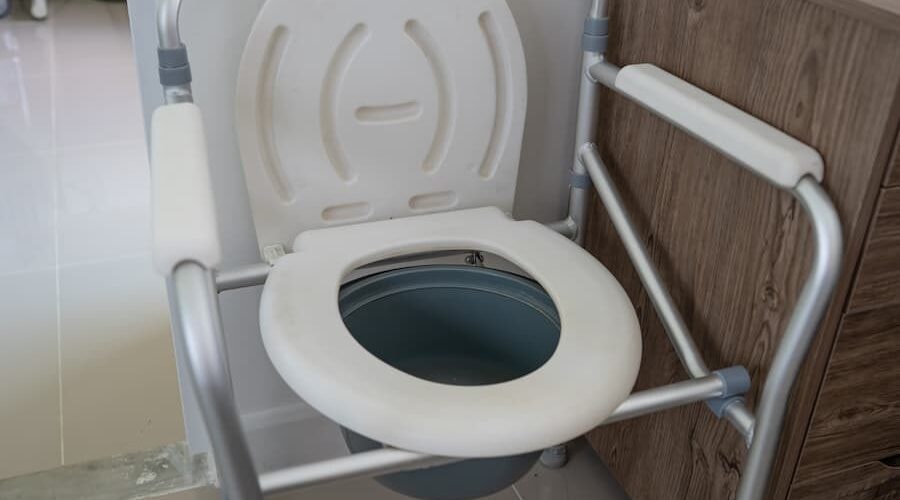
Installing a raised toilet seat can significantly enhance the bathroom experience for individuals with mobility limitations. The user or a professional can accomplish the process with the right tools and a clear understanding of the steps involved.
DIY Vs. Professional Installation
When installing a raised toilet seat, individuals often choose between a DIY installation or hiring a professional. A DIY approach can be cost-effective and straightforward if done according to the manufacturer’s instructions.
On the other hand, seeking professional help ensures the installation is handled properly, which might be necessary for those who are not comfortable with manual tasks or lack the physical ability to do so.
Tools and Equipment Needed
To install a raised toilet seat, one will typically need the following:
- Adjustable wrench.
- Screwdriver.
- Gloves (optional, for hygiene purposes).
Ensure that all necessary tools are at hand before beginning the installation to streamline the process.

Step-by-Step Installation Guide
- Remove Existing Seat: Gently lift the current toilet seat’s hinges or unscrew its bolts.
- Clean the Area: Wipe the porcelain surface of the toilet clean where the raised seat will sit.
- Position the Raised Seat: Carefully align the newly raised toilet seat on the bowl.
- Secure the Seat: Depending on the design, one may need to place washers, insert screws through the aligned holes, and tightly secure with nuts using an adjustable wrench.
- Final Checks: Ensure the raised toilet seat is stable and does not move before use.
Following the manufacturer’s specific instructions is crucial for the best results, as installation methods might differ slightly based on the design.
Here’s an additional video on installing raised toilet seats.
By: EquipMeOT
Maintenance and Care for Raised Toilet Seats
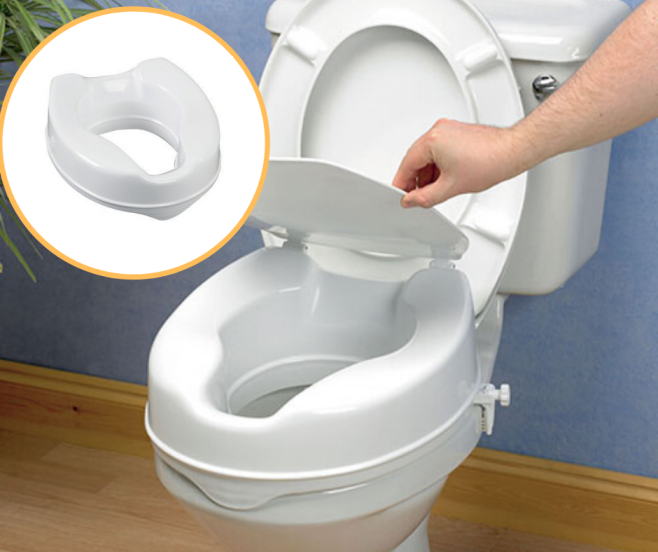
Proper maintenance and consistent care are essential for ensuring that raised toilet seats remain safe and hygienic. Users should follow specific guidelines to keep these devices in optimal condition.
Cleaning Instructions
- Frequency: Raised toilet seats should be cleaned at least once a week to maintain hygiene. High-usage seats may require more frequent cleaning.
- Materials: Use a non-abrasive cleaner and a soft cloth or sponge to avoid scratching the surface.
- Procedure:
- Wipe the seat with a damp cloth to remove debris.
- Apply cleaner according to the manufacturer’s instructions.
- Scrub gently with a cloth or sponge.
- Rinse the seat thoroughly with water.
- Dry with a clean towel or allow it to air dry.
- Disinfection: After cleaning, apply a disinfectant to eliminate any germs. Ensure the raised toilet seat is completely dried before the next use to prevent moisture accumulation.
Regular Inspection and Maintenance
- Stability Checks: Periodically test the raised toilet seat for stability, especially before use, to confirm that it remains securely attached to the toilet bowl.
- Components to Check: Examine the clamps or brackets for tightness and signs of wear. And look for cracks or stress marks on the seat itself.
- Replacement Parts: If any parts show damage or excessive wear, replace them immediately. Refer to how to care for your raised toilet seat for additional guidance.
Inspecting the seat’s surface for signs of wear or damage is also crucial. Smoother surfaces can indicate a slip hazard and require prompt replacement to ensure user safety.
Elevating Comfort and Safety: The Benefits of Raised Toilet Seats for Accessibility
In summary, the benefits of raised toilet seats for accessibility are profound, offering a simple yet effective solution to enhance comfort and safety for individuals facing mobility challenges. By raising the height of the toilet, these adaptive devices significantly reduce physical strain and improve ease of use, allowing users to maintain their independence with greater dignity.
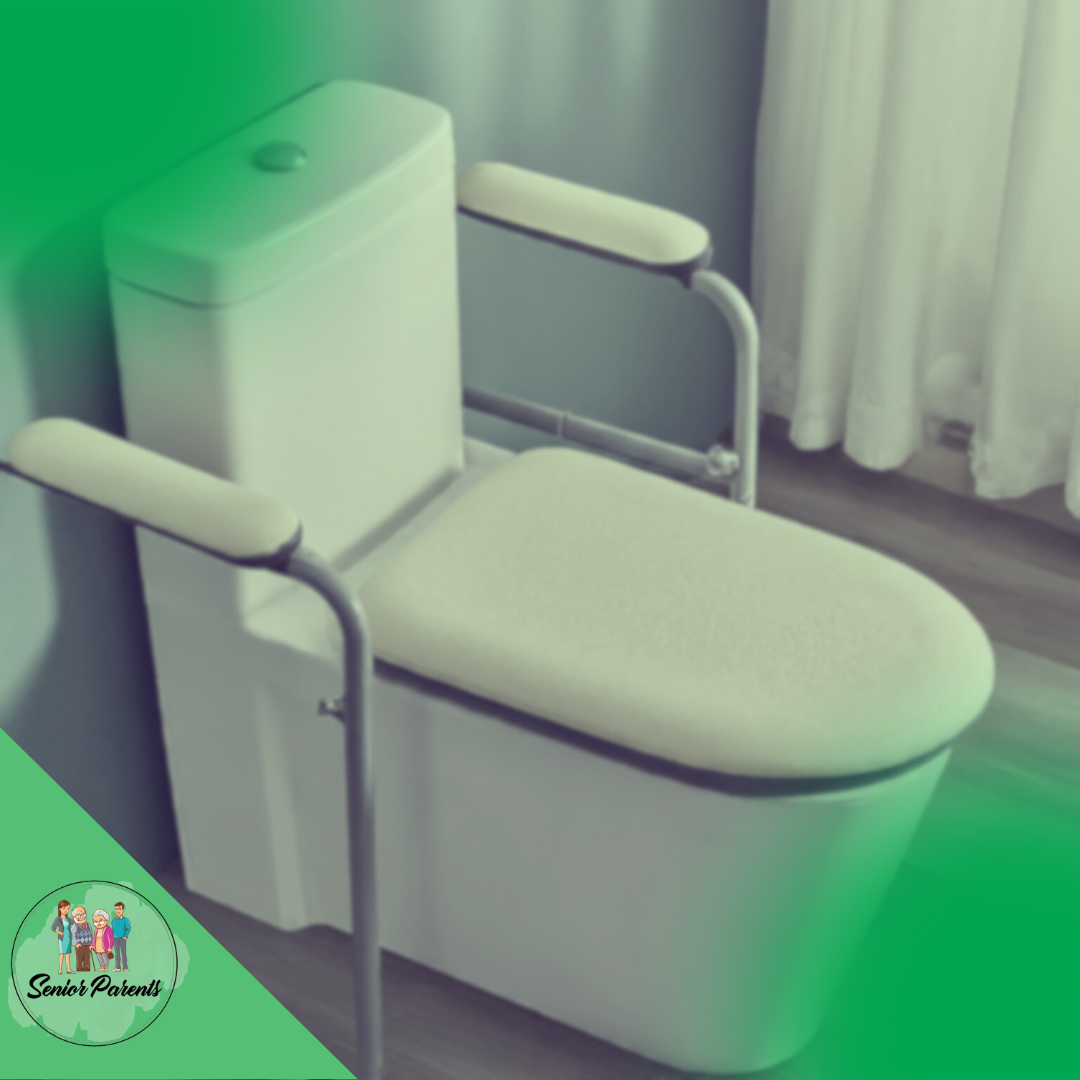
With various designs and features, raised toilet seats can be tailored to meet specific needs, ensuring a safer and more accommodating bathroom environment. Whether you’re considering installation for yourself or a loved one, understanding the selection criteria, installation process and maintenance tips can help maximize the benefits of these essential aids.
By addressing the specific needs of those with mobility issues, raised toilet seats contribute to better physical safety and an improved quality of life. Investing in such practical solutions can make a difference, transforming daily routines into more manageable and comfortable experiences.
Frequently Asked Questions
What Are the Key Advantages of Using a Raised Toilet Seat for Elderly Individuals?
Raised toilet seats reduce the distance one needs to lower themselves onto or rise from the toilet, lessening the strain on the joints and muscles. This can be distinctly beneficial for elderly individuals, aiding in preventing falls and promoting ease of use.
How Does a Raised Toilet Seat Assist in Safe Transfers for Those With Mobility Issues?
By elevating the height of the toilet, a raised toilet seat facilitates safer and more effortless transfers to and from a wheelchair or walker. This increased height allows for a more manageable lateral move, which is critical for those with limited mobility.
How Can a Toilet Seat Riser Improve Independence for Individuals Requiring Assistance in the Restroom?
Toilet seat risers empower users by lessening the need for personal assistance when using the restroom. The additional height minimizes physical exertion, enabling individuals to utilize the facilities without external help.
Connect with Us for the Latest in Senior Care
Ready to start a journey of care and wisdom? Follow us on social media for heartwarming stories, expert tips, and valuable insights into senior caregiving!
? Website: Explore sr-parents.com for in-depth articles and resources about senior care, health, and well-being.
? Pinterest: Discover a wealth of caregiving ideas, home hacks, and senior-friendly activities at pinterest.com/seniorparents.
? Facebook: Join our supportive community at facebook.com/sr.parents. Engage with fellow caregivers, share experiences, and find inspiration.
? Twitter: Connect with us at twitter.com/senior_parents for real-time updates, news, and trending topics related to senior care.
? Instagram: Follow us on instagram.com/seniorparents for uplifting moments, caregiving tips, and a glimpse into the lives of seniors and their families.
Stay informed, inspired, and supported with our latest articles and heartwarming stories about senior care.

